-
 Bitcoin
Bitcoin $84,887.8886
1.15% -
 Ethereum
Ethereum $1,642.5421
4.46% -
 Tether USDt
Tether USDt $0.9997
0.02% -
 XRP
XRP $2.1371
3.96% -
 BNB
BNB $596.3744
1.16% -
 Solana
Solana $129.9399
7.55% -
 USDC
USDC $0.9998
-0.02% -
 Dogecoin
Dogecoin $0.1666
3.79% -
 TRON
TRON $0.2476
2.11% -
 Cardano
Cardano $0.6527
3.49% -
 UNUS SED LEO
UNUS SED LEO $9.3206
-0.73% -
 Chainlink
Chainlink $13.0892
2.57% -
 Avalanche
Avalanche $20.3596
4.93% -
 Stellar
Stellar $0.2450
4.18% -
 Sui
Sui $2.3183
3.47% -
 Toncoin
Toncoin $3.0155
1.09% -
 Shiba Inu
Shiba Inu $0.0...01256
2.60% -
 Hedera
Hedera $0.1720
1.61% -
 Bitcoin Cash
Bitcoin Cash $350.3078
11.67% -
 MANTRA
MANTRA $6.2812
-2.17% -
 Litecoin
Litecoin $78.8248
2.32% -
 Polkadot
Polkadot $3.7123
3.59% -
 Hyperliquid
Hyperliquid $16.2646
3.18% -
 Dai
Dai $1.0002
0.02% -
 Bitget Token
Bitget Token $4.3865
1.15% -
 Pi
Pi $0.7345
20.70% -
 Ethena USDe
Ethena USDe $0.9990
0.03% -
 Monero
Monero $205.5954
0.29% -
 Uniswap
Uniswap $5.5522
4.97% -
 OKB
OKB $53.6736
0.54%
What is DPoS? How is it different from PoS?
DPoS uses community-elected validators for faster, scalable blockchain transactions, while PoS selects validators based on staked tokens, emphasizing energy efficiency.
Apr 12, 2025 at 11:08 am
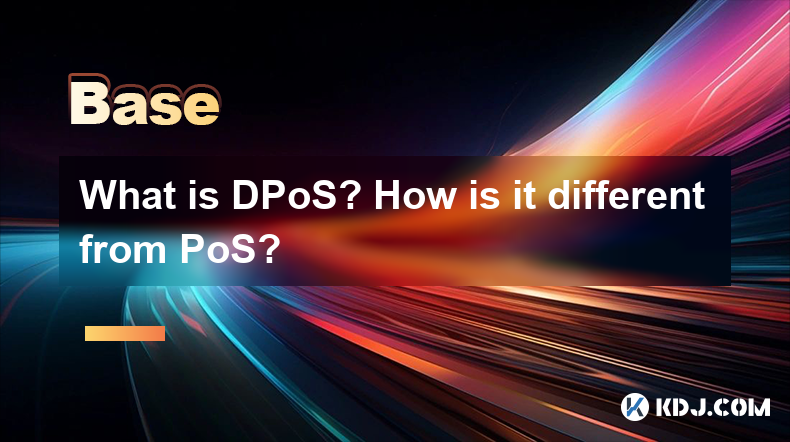
What is DPoS? How is it different from PoS?
Delegated Proof of Stake (DPoS) and Proof of Stake (PoS) are both consensus mechanisms used in blockchain networks to validate transactions and add new blocks to the blockchain. While they share some similarities, they have distinct differences that set them apart. In this article, we will delve into the intricacies of DPoS, compare it with PoS, and highlight their unique features.
Understanding DPoS
DPoS stands for Delegated Proof of Stake. It is a consensus algorithm that aims to achieve faster transaction processing and greater scalability compared to traditional Proof of Work (PoW) systems. In a DPoS system, token holders vote to elect a number of delegates or validators who are responsible for creating new blocks and maintaining the network.
In DPoS, the voting process is crucial as it determines who gets to be a validator. Token holders cast their votes for the delegates they trust, and the top vote-getters become the validators. These validators take turns producing blocks, and the system ensures that the block production process is fair and efficient.
One of the key advantages of DPoS is its speed and efficiency. Because the number of validators is limited and they are elected by the community, the validation process is much faster than in other consensus mechanisms. This allows DPoS networks to handle a higher volume of transactions per second, making them more suitable for applications that require quick transaction processing.
Key Features of DPoS
DPoS has several features that make it unique and attractive to blockchain developers and users. Some of these features include:
- Democratic Governance: DPoS allows token holders to participate in the governance of the network by voting for validators. This democratic process ensures that the network is controlled by the community rather than a centralized entity.
- Scalability: DPoS networks can process a higher number of transactions per second due to the limited number of validators and the efficient block production process.
- Energy Efficiency: Unlike PoW systems that require significant computational power and energy consumption, DPoS is much more energy-efficient as it relies on voting and consensus among validators.
Understanding PoS
PoS, or Proof of Stake, is another consensus mechanism that aims to address the limitations of PoW. In a PoS system, validators are chosen to create new blocks based on the number of tokens they hold and are willing to "stake" as collateral. The more tokens a validator stakes, the higher their chances of being selected to create a new block.
In PoS, the validation process is less energy-intensive than PoW because it does not require solving complex mathematical problems. Instead, validators are chosen based on their stake, and the system ensures that validators act honestly by penalizing them for any malicious behavior.
One of the main advantages of PoS is its energy efficiency. Since it does not rely on computational power, PoS systems consume significantly less energy than PoW systems. Additionally, PoS can be more inclusive as it allows anyone with a sufficient number of tokens to participate in the validation process, regardless of their access to specialized hardware.
Key Features of PoS
PoS has several features that make it an attractive alternative to PoW and other consensus mechanisms. Some of these features include:
- Energy Efficiency: PoS systems consume less energy than PoW systems, making them more environmentally friendly.
- Inclusivity: Anyone with a sufficient number of tokens can participate in the validation process, making PoS more accessible to a broader range of participants.
- Security: PoS systems can be designed to penalize validators for malicious behavior, ensuring the security and integrity of the network.
Comparing DPoS and PoS
While both DPoS and PoS aim to improve upon the limitations of PoW, they have distinct differences that set them apart. Here are some key points of comparison:
- Validator Selection: In DPoS, validators are elected by token holders through a voting process. In PoS, validators are chosen based on the number of tokens they stake.
- Scalability: DPoS is generally considered more scalable than PoS due to its limited number of validators and efficient block production process.
- Governance: DPoS has a more democratic governance model as token holders can vote for validators. PoS systems may not have a direct voting mechanism for validator selection.
- Energy Efficiency: Both DPoS and PoS are more energy-efficient than PoW, but DPoS may have an edge due to its smaller number of validators and streamlined validation process.
Use Cases for DPoS and PoS
DPoS and PoS are used in various blockchain networks, each with its own set of applications and use cases. Some notable examples include:
- DPoS: EOS and TRON are popular blockchain networks that use DPoS. EOS is known for its high transaction throughput and is often used for decentralized applications (dApps) and smart contracts. TRON, on the other hand, focuses on content sharing and entertainment applications.
- PoS: Ethereum is transitioning from PoW to PoS with its Ethereum 2.0 upgrade. Other PoS networks include Cardano and Tezos, which are known for their focus on scalability, security, and smart contract functionality.
Conclusion
In conclusion, DPoS and PoS are both innovative consensus mechanisms that aim to improve the efficiency, scalability, and energy efficiency of blockchain networks. While DPoS relies on a voting process to elect validators, PoS selects validators based on their stake. Both mechanisms have their own strengths and use cases, and the choice between them depends on the specific requirements of the blockchain network.
Frequently Asked Questions
Q1: Can DPoS and PoS be used together in a single blockchain network?
A1: While it is technically possible to combine DPoS and PoS in a single blockchain network, it is not a common practice. Each consensus mechanism has its own strengths and is designed to address specific challenges. Combining them could lead to increased complexity and potential conflicts in the validation process.
Q2: How do DPoS and PoS handle network security and prevent malicious behavior?
A2: Both DPoS and PoS have mechanisms in place to ensure network security and prevent malicious behavior. In DPoS, validators can be voted out by token holders if they act maliciously. In PoS, validators can be penalized by losing their staked tokens if they engage in malicious activities. These mechanisms help maintain the integrity and security of the network.
Q3: What are the potential drawbacks of DPoS and PoS?
A3: DPoS can be criticized for its potential for centralization, as the number of validators is limited and the voting process may be dominated by a few large token holders. PoS, on the other hand, may face issues related to the "nothing at stake" problem, where validators could potentially vote for multiple blockchain forks without incurring significant penalties. Both mechanisms have their own set of challenges that need to be addressed to ensure their long-term viability.
Q4: How do DPoS and PoS impact the decentralization of a blockchain network?
A4: DPoS can be seen as less decentralized than PoS due to its limited number of validators and the potential for large token holders to dominate the voting process. PoS, while more inclusive, can still face centralization risks if a small number of participants hold a large portion of the staked tokens. The level of decentralization in both DPoS and PoS depends on the specific implementation and the distribution of tokens within the network.
Disclaimer:info@kdj.com
The information provided is not trading advice. kdj.com does not assume any responsibility for any investments made based on the information provided in this article. Cryptocurrencies are highly volatile and it is highly recommended that you invest with caution after thorough research!
If you believe that the content used on this website infringes your copyright, please contact us immediately (info@kdj.com) and we will delete it promptly.
- Shiba Inu (SHIB) Has Cemented Its Status as One of the Trendiest Meme Coins
- 2025-04-13 02:00:13
- MAGACOIN FINANCE (MGA) Is Buzzing—and It's One of the Best Cryptos to Buy Today
- 2025-04-13 02:00:13
- Once gushed over and tipped to usurp Bitcoin, Ethereum now faces what at least one analyst has dubbed a “midlife crisis.”
- 2025-04-13 01:55:14
- Sui (SUI), which is in the 17th position of cryptocurrencies, has been getting more attention recently
- 2025-04-13 01:55:14
- UXLINK Partners with Stanford to Shape the Future of Digital Currency
- 2025-04-13 01:55:13
- SUI Price Recovers Strongly from Recent Lows After Reclaiming the $2.18 Mark. The Price is Now Testing Resistance at $2.22
- 2025-04-13 01:55:13
Related knowledge

What is Delayed Encryption technology?
Apr 11,2025 at 10:42pm
What is Delayed Encryption Technology? In the world of cryptocurrencies, security is paramount. One of the innovative solutions to enhance the security of digital transactions is Delayed Encryption Technology. This technology introduces a layer of security by encrypting data with a time delay, ensuring that the information remains secure until a specifi...
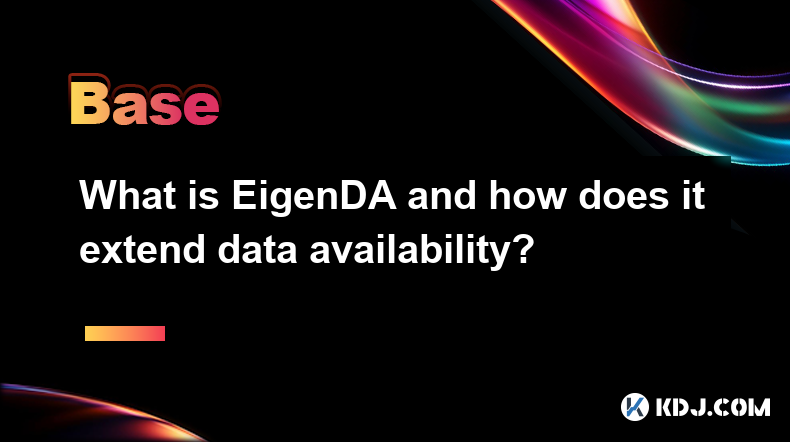
What is EigenDA and how does it extend data availability?
Apr 11,2025 at 05:28pm
EigenDA is a groundbreaking solution within the cryptocurrency ecosystem designed to enhance data availability across blockchain networks. Developed by EigenLayer, EigenDA aims to address the critical issue of data availability, ensuring that all participants in a blockchain network can access the necessary data to verify transactions and maintain the i...
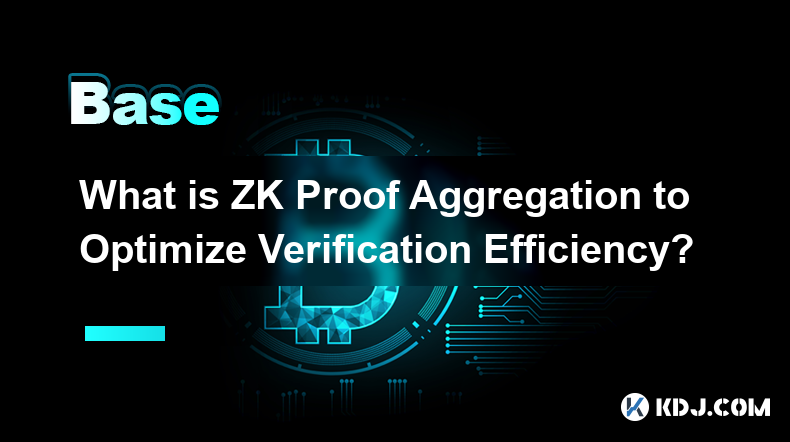
What is ZK Proof Aggregation to Optimize Verification Efficiency?
Apr 11,2025 at 05:42pm
ZK Proof Aggregation is a technique used in the field of zero-knowledge proofs (ZKPs) to enhance the efficiency of verifying multiple proofs. In the context of cryptocurrencies, where scalability and efficiency are paramount, ZK Proof Aggregation plays a crucial role in optimizing the verification process. This method allows multiple proofs to be combin...

What is DePIN (Decentralized Physical Infrastructure)?
Apr 12,2025 at 01:42am
What is DePIN (Decentralized Physical Infrastructure)? DePIN, or Decentralized Physical Infrastructure, represents a groundbreaking approach to building and managing physical infrastructure using decentralized technologies. At its core, DePIN leverages blockchain and other decentralized systems to create, operate, and maintain physical assets in a way t...
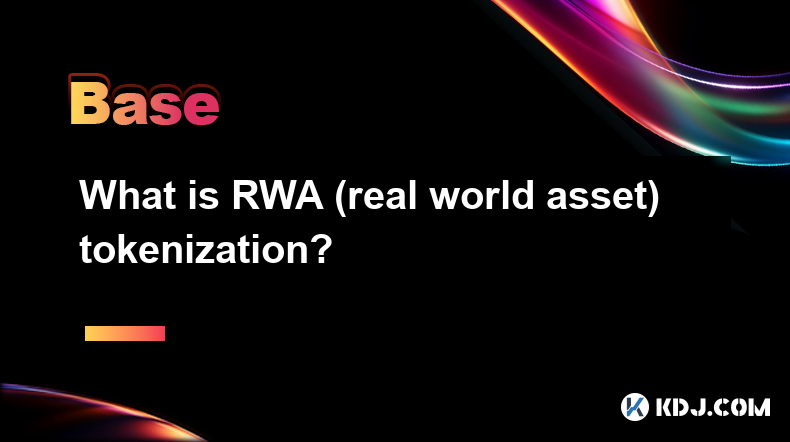
What is RWA (real world asset) tokenization?
Apr 13,2025 at 12:21am
What is RWA (Real World Asset) Tokenization? RWA (Real World Asset) tokenization refers to the process of converting tangible or intangible real-world assets into digital tokens on a blockchain. This innovative approach allows for the representation, ownership, and transfer of assets such as real estate, art, commodities, and intellectual property throu...
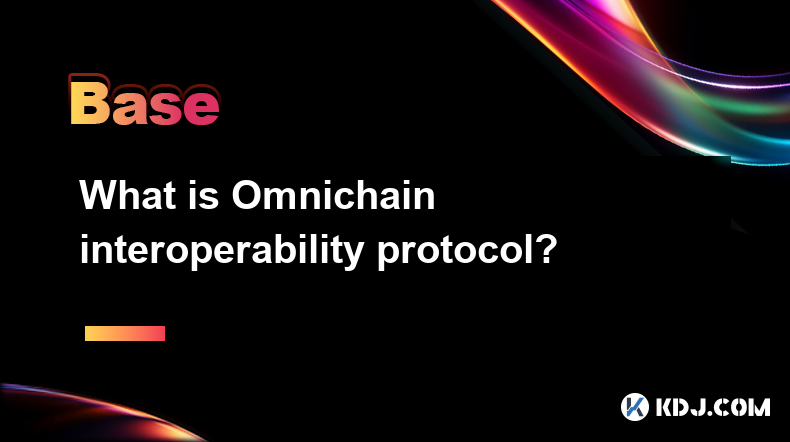
What is Omnichain interoperability protocol?
Apr 11,2025 at 08:36pm
The Omnichain interoperability protocol refers to a technology designed to enable seamless interaction and data exchange between different blockchain networks. This protocol aims to solve the issue of blockchain isolation by allowing assets, data, and functionalities to move freely across various chains. In essence, Omnichain interoperability facilitate...

What is Delayed Encryption technology?
Apr 11,2025 at 10:42pm
What is Delayed Encryption Technology? In the world of cryptocurrencies, security is paramount. One of the innovative solutions to enhance the security of digital transactions is Delayed Encryption Technology. This technology introduces a layer of security by encrypting data with a time delay, ensuring that the information remains secure until a specifi...

What is EigenDA and how does it extend data availability?
Apr 11,2025 at 05:28pm
EigenDA is a groundbreaking solution within the cryptocurrency ecosystem designed to enhance data availability across blockchain networks. Developed by EigenLayer, EigenDA aims to address the critical issue of data availability, ensuring that all participants in a blockchain network can access the necessary data to verify transactions and maintain the i...

What is ZK Proof Aggregation to Optimize Verification Efficiency?
Apr 11,2025 at 05:42pm
ZK Proof Aggregation is a technique used in the field of zero-knowledge proofs (ZKPs) to enhance the efficiency of verifying multiple proofs. In the context of cryptocurrencies, where scalability and efficiency are paramount, ZK Proof Aggregation plays a crucial role in optimizing the verification process. This method allows multiple proofs to be combin...

What is DePIN (Decentralized Physical Infrastructure)?
Apr 12,2025 at 01:42am
What is DePIN (Decentralized Physical Infrastructure)? DePIN, or Decentralized Physical Infrastructure, represents a groundbreaking approach to building and managing physical infrastructure using decentralized technologies. At its core, DePIN leverages blockchain and other decentralized systems to create, operate, and maintain physical assets in a way t...

What is RWA (real world asset) tokenization?
Apr 13,2025 at 12:21am
What is RWA (Real World Asset) Tokenization? RWA (Real World Asset) tokenization refers to the process of converting tangible or intangible real-world assets into digital tokens on a blockchain. This innovative approach allows for the representation, ownership, and transfer of assets such as real estate, art, commodities, and intellectual property throu...

What is Omnichain interoperability protocol?
Apr 11,2025 at 08:36pm
The Omnichain interoperability protocol refers to a technology designed to enable seamless interaction and data exchange between different blockchain networks. This protocol aims to solve the issue of blockchain isolation by allowing assets, data, and functionalities to move freely across various chains. In essence, Omnichain interoperability facilitate...
See all articles























































































